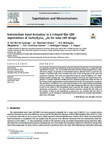
Please use this identifier to cite or link to this item:
http://ricaxcan.uaz.edu.mx/jspui/handle/20.500.11845/617Full metadata record
| DC Field | Value | Language |
|---|---|---|
| dc.contributor | 39945 | es_ES |
| dc.contributor.other | https://orcid.org/0000-0003-0087-8991 | - |
| dc.coverage.spatial | Global | es_ES |
| dc.creator | del Río de Santiago, Antonio | - |
| dc.creator | Martínez Orozco, Juan Carlos | - |
| dc.creator | Rodríguez Magdaleno, Karla Arely | - |
| dc.creator | Contreras Solorio, David Armando | - |
| dc.creator | Rodríguez Vargas, Isaac | - |
| dc.creator | Ungan, Fatih | - |
| dc.date.accessioned | 2018-08-08T16:37:27Z | - |
| dc.date.available | 2018-08-08T16:37:27Z | - |
| dc.date.issued | 2018-03 | - |
| dc.identifier | info:eu-repo/semantics/publishedVersion | es_ES |
| dc.identifier.issn | 0749-6036 | es_ES |
| dc.identifier.uri | http://hdl.handle.net/20.500.11845/617 | - |
| dc.identifier.uri | https://doi.org/10.48779/q5s1-9276 | - |
| dc.description.abstract | It is reported a numerical computation of the local density of states for a d-doped like QW superlattices of AlxGa1 xAs, as a possible heterostructure that, being integrated into a solar cell device design, can provide an intermediate band of allowed states to assist the absorption of photons with lower energies than that of the energy gap of the solar-cell constituent materials. This work was performed using the nearest neighbors sp3s tightbinding model including spin. The confining potential caused by the ionized donor impurities in d-doped impurities seeding that was obtained analytically within the lines of the Thomas-Fermi approximation was reproduced here by the Al concentration x variation. This potential is considered as an external perturbation in the tight-binding methodology and it is included in the diagonal terms of the tight-binding Hamiltonian. Special attention is paid to the width of the intermediate band caused by the change in the considered aluminium concentration x, the inter-well distance between d-doped like QW wells and the number of them in the superlattice. In general we can conclude that this kind of superlattices can be suitable for intermediate band formation for possible intermediateband solar cell design. | es_ES |
| dc.language.iso | eng | es_ES |
| dc.publisher | Elsevier | es_ES |
| dc.relation | https://www.sciencedirect.com/science/article/pii/S0749603618300533?via%3Dihub#! | es_ES |
| dc.relation.ispartof | https://reader.elsevier.com/reader/sd/B6A72483DD36EDEC5DF9C035BAABF8ED6AB97A93210E430B16D8E9E84A94F19957C7758537E8A415DC833225ACE329D5 | es_ES |
| dc.relation.uri | generalPublic | es_ES |
| dc.rights | Atribución-NoComercial-CompartirIgual 3.0 Estados Unidos de América | * |
| dc.rights.uri | http://creativecommons.org/licenses/by-nc-sa/3.0/us/ | * |
| dc.source | Superlattices and Microstructures, Volume 115, March 2018, Pages 191-196 | es_ES |
| dc.subject.classification | CIENCIAS FISICO MATEMATICAS Y CIENCIAS DE LA TIERRA [1] | es_ES |
| dc.subject.other | d-doped superlattice | es_ES |
| dc.subject.other | Intermediate-band | es_ES |
| dc.subject.other | Solar cells | es_ES |
| dc.title | Intermediate band formation in a d-doped like QW superlattices of GaAs/AlxGa1 xAs for solar cell design | es_ES |
| dc.type | info:eu-repo/semantics/article | es_ES |
| Appears in Collections: | *Documentos Académicos*-- UA Física | |
Files in This Item:
| File | Description | Size | Format | |
|---|---|---|---|---|
| Intermediate band form ation in ad-doped like QWsuperlattices of GaAsAlxGa1xAs for solar cell design.pdf | 1,1 MB | Adobe PDF |  View/Open |
This item is licensed under a Creative Commons License
